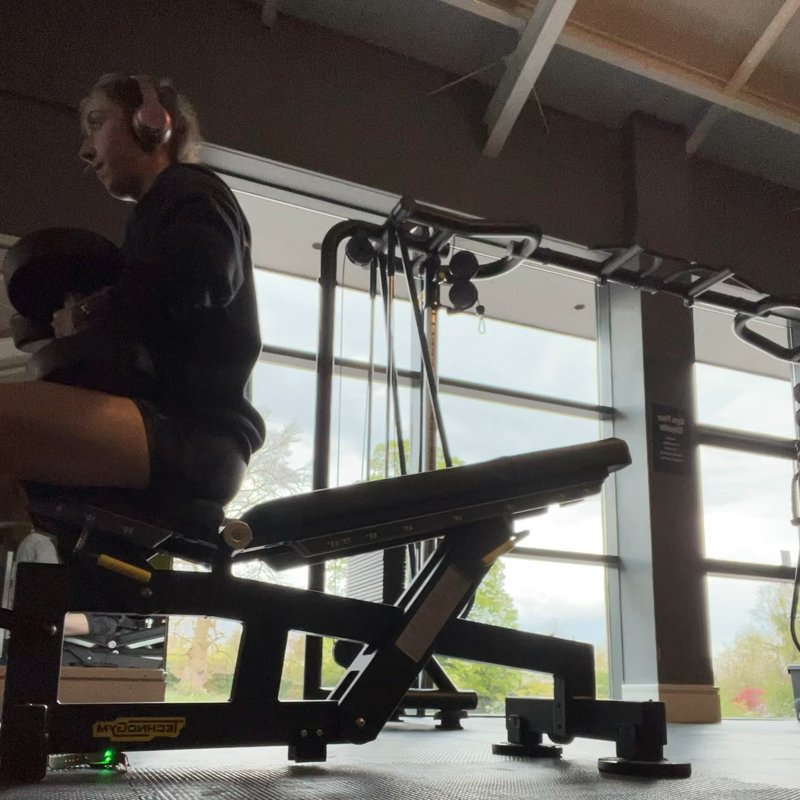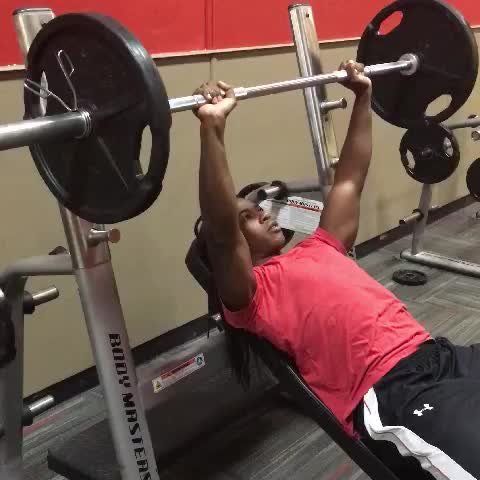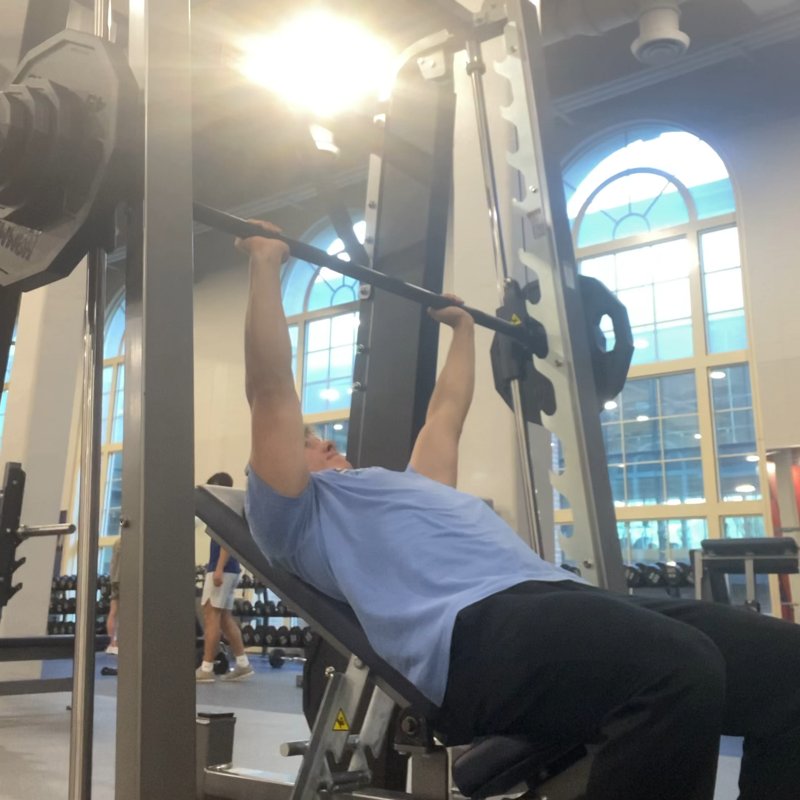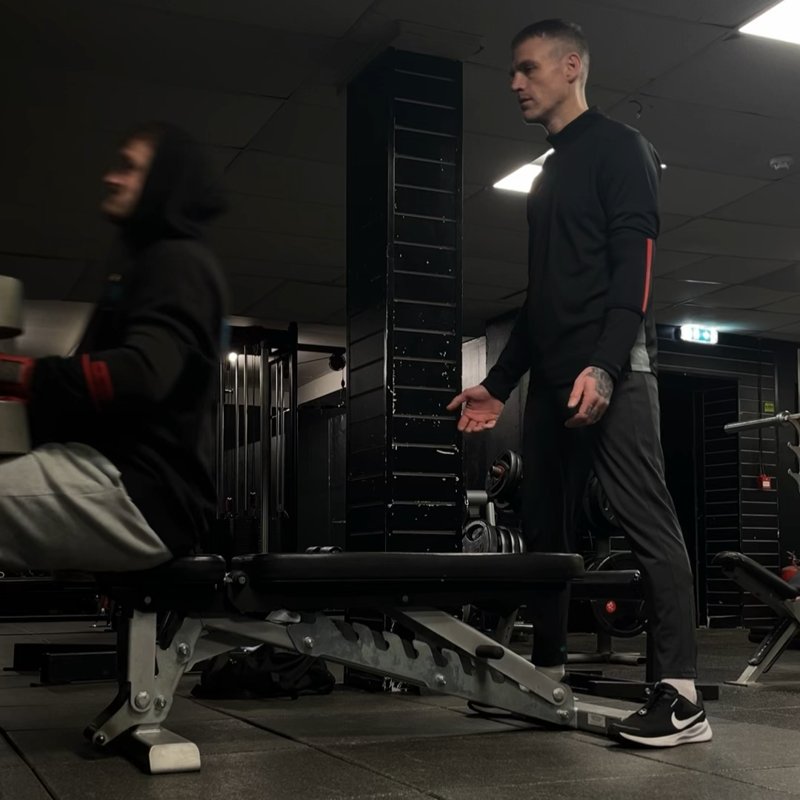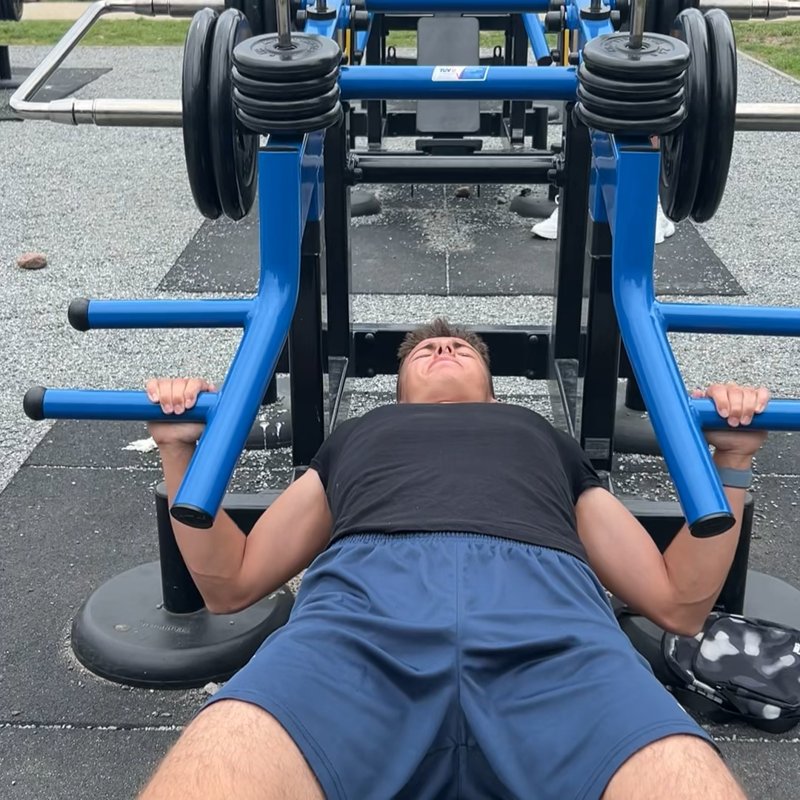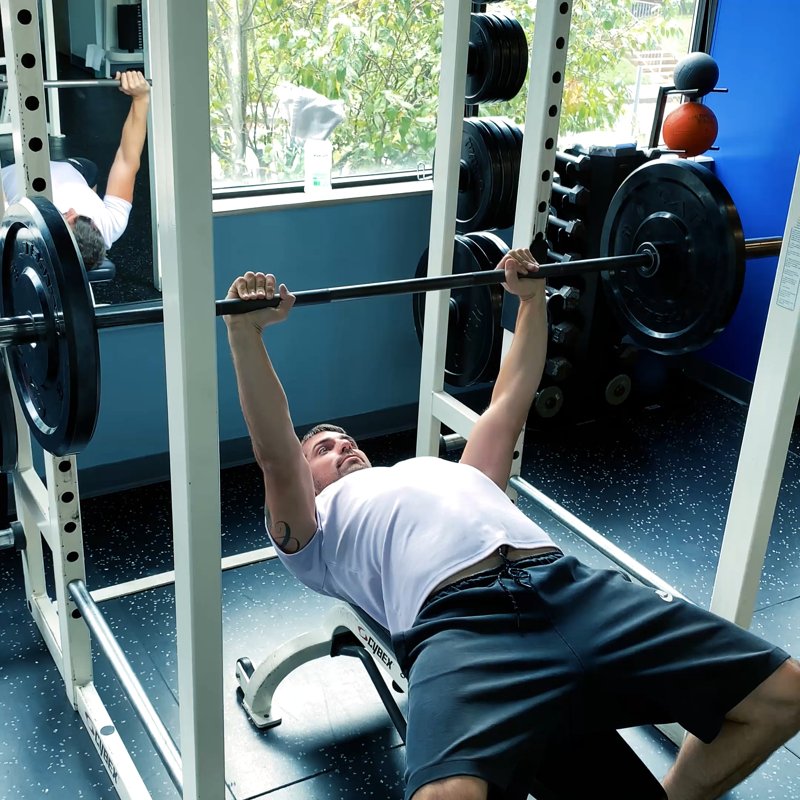Chest Press Machine: The Ultimate Guide
The Chest Press Machine is a guided resistance exercise that targets the chest, shoulders, and triceps muscles in a controlled environment, making it an excellent option for beginners, rehabilitation, or as a complement to free weight training.
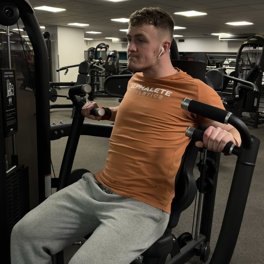
Quick Facts
Key Benefit
Controlled chest development with reduced stabilization demands
Primary Muscles
Anterior Deltoids, Pectoralis Major, Triceps
Secondary Muscles
Abdominals, Pectoralis Minor
Equipment
machine
Difficulty
Beginner
Type
Strength
In This Guide
Ready to master the Chest Press Machine?
Track your progress, see improvements over time, and build strength consistently.
Download GravitusThe Chest Press Machine provides a structured, guided approach to chest training that offers several unique benefits compared to free-weight alternatives. This fixed-path resistance exercise allows you to focus exclusively on pushing strength without the complexity of balancing free weights. For beginners, the chest press machine offers a safe introduction to resistance training with reduced risk of injury. The guided motion helps establish proper movement patterns before progressing to more challenging free-weight exercises like bench presses. Those recovering from injuries often find machine-based exercises valuable during rehabilitation, as they provide controlled resistance with less stress on stabilizing muscles and joints. This makes the chest press machine an excellent bridge between physical therapy and returning to unrestricted training. Even experienced lifters can benefit from incorporating machine chest presses into their routine. The stable environment allows for high-intensity techniques like drop sets, forced reps, or training to muscular failure without requiring a spotter. While the chest press machine should not completely replace free-weight training for most people, it serves as a valuable tool in a comprehensive chest development program, offering unique advantages that complement barbell and dumbbell exercises.
Benefits of the Chest Press Machine
The chest press machine offers several distinct advantages, particularly for certain populations or training scenarios.
Beginner-Friendly
The fixed movement path helps beginners learn proper pressing form without the coordination demands of free weights, making it an excellent starting point for chest training.
Controlled Environment
Reduces the risk of injury by eliminating the need to balance the weight, allowing you to focus purely on the pushing motion and muscle contraction.
Isolation
The guided path and supportive design minimize the involvement of stabilizer muscles, potentially creating more direct stimulus to the primary chest, shoulder, and triceps muscles.
Rehabilitation Potential
Offers a safe option for those recovering from injuries or returning to chest training, as the controlled motion reduces stress on healing tissues and joints.
Independent Arm Training
Many chest press machines allow each arm to move independently, helping identify and address strength imbalances between sides.
Proper Form & Technique
Setup
- Adjust the seat height so the handles align approximately with mid-chest level when seated.
- Set the weight to an appropriate level that allows for proper form throughout the full set.
- Sit with your back firmly against the backrest, maintaining good posture with a neutral spine.
- Place your feet flat on the floor or on the footrests, creating a stable base.
- Grasp the handles with a full grip (thumb wrapped around), hands positioned in line with your chest.
- Before beginning the movement, retract your shoulder blades by pulling them down and back.
Movement
- Take a deep breath and brace your core before initiating the press.
- Push the handles forward by extending your arms, focusing on contracting your chest muscles.
- Maintain contact between your back and the backrest throughout the movement.
- Continue pressing until your arms are nearly straight, but avoid locking out your elbows completely.
- Hold the extended position briefly, focusing on squeezing your chest muscles.
- Exhale as you complete the pressing motion.
- Slowly return to the starting position with control, allowing your chest muscles to stretch slightly.
- Inhale during this return phase, preparing for the next repetition.
- Repeat for the desired number of repetitions, maintaining proper form throughout.
Key Form Tips
Seat Position
Ensure the seat is adjusted so the handles align with mid-chest level for optimal pectoral engagement.
Back Support
Keep your back pressed against the backrest throughout the movement to maintain proper form and reduce lower back strain.
Elbow Path
Follow the natural arc of the machine without forcing your own path, which could strain the shoulders or reduce effectiveness.
Controlled Tempo
Avoid using momentum by maintaining a controlled pace, especially during the lowering phase.
Breath Control
Exhale during the pushing phase and inhale during the return phase to optimize intra-abdominal pressure and stability.
Muscles Worked
Primary Muscles
- pectoralis major: The large fan-shaped chest muscle is the primary mover in this exercise, responsible for the horizontal adduction of the arm across the chest.
- anterior deltoids: The front portion of the shoulder muscles assists significantly in the pressing motion, particularly in the early phase of the movement.
- triceps: The three-headed muscle on the back of the upper arm is responsible for extending the elbow during the pressing motion.
Secondary Muscles
- pectoralis minor: Located along the ribs under the armpit, this muscle assists in scapular protraction during the pushing phase.
- coracobrachialis: A smaller muscle in the upper arm that assists in stabilizing the shoulder during pressing movements.
- serratus anterior: The smaller chest muscle beneath the pectoralis major that helps stabilize the scapula during pressing movements.
- abdominals: The abdominals and lower back muscles work isometrically to maintain proper posture during the exercise.
Common Mistakes and How to Fix Them
Improper Seat Adjustment
Having the seat too high or too low changes the muscle emphasis and can stress joints. Take time to properly adjust the seat height so the handles align with your mid-chest level when seated with your back against the backrest.
Arching the Back
Excessive arching reduces chest engagement and can strain the lower back. Maintain contact between your back and the backrest throughout the movement, keeping a neutral spine position.
Incomplete Range of Motion
Not allowing a sufficient stretch in the starting position or not pressing to near full extension limits muscle development. Begin with the handles close enough to allow a slight stretch in your chest, and press until your arms are nearly straight (without locking elbows).
Using Momentum
Bouncing the weight or using jerky movements reduces effectiveness and increases injury risk. Control the weight throughout the entire range of motion, particularly during the negative (lowering) phase.
Holding Breath
Breath-holding can elevate blood pressure and reduce stability. Establish a consistent breathing pattern - exhale during the pushing phase and inhale during the return phase.
Chest Press Machine Variations
Machine Variations
-
Single Arm Chest Press Machine
Performing the exercise one arm at a time to address muscle imbalances and increase unilateral strength.
-
Wide Grip Chest Press
Using a wider hand position (if the machine allows) to emphasize the outer portions of the chest muscles.
-

Close-Grip Chest Press
Using a narrower hand position to increase triceps involvement while still engaging the chest.
Training Technique Variations
-

Tempo Training
Manipulating the speed of different phases of the movement (e.g., 3 seconds down, 1 second up) to increase time under tension.
-

Drop Sets
Performing a set to near failure, quickly reducing the weight, and continuing for additional repetitions without rest.
-

Partial Reps
Working through a limited range of motion (either the top or bottom half) to focus on specific portions of the strength curve.
Frequently Asked Questions
The chest press machine and bench press each have distinct advantages. The machine version provides more isolation with reduced stabilization demands, making it excellent for beginners, rehabilitation scenarios, or focused muscle development. The bench press engages more stabilizing muscles and generally allows heavier loading, making it superior for raw strength development and athletic carryover. Most well-designed training programs would include both machine and free-weight exercises for complete development. For pure muscle building, both can be equally effective when performed properly, but they develop slightly different aspects of strength and muscle function.
For general fitness goals, training chest 1-3 times per week is typical, with the chest press machine potentially included in each of these sessions. As a beginner, you might perform the chest press machine twice weekly with at least 48 hours between sessions for recovery. For more advanced trainees, the frequency depends on your overall program design - you might use the machine as your primary chest movement in one session and as a secondary or finishing movement in another. Listen to your body - adequate recovery between chest-focused workouts is essential for progress and injury prevention.
This depends on your specific goals. To maximize strength on free weight exercises like bench press, perform them first in your workout when your energy and neuromuscular system are fresh. If your primary goal is chest hypertrophy (muscle growth), you might use the chest press machine after free weights as a more controlled movement to continue working the muscles after fatigue makes free weights less practical. For pre-exhaustion techniques, using the machine first can pre-fatigue the chest before moving to compound movements. Most commonly, the machine is used after free weight work, but program design should align with your individual goals.
Yes, you can certainly build significant chest muscle using only the chest press machine, provided you're using appropriate resistance and progressive overload principles. The chest press machine effectively targets the pectoral muscles and, when used with proper intensity, can stimulate muscle growth. However, for complete chest development, incorporating a variety of exercises that target the chest from different angles and with different movement patterns is recommended. The human body adapts best to diverse stimuli, so while the chest press machine can be a cornerstone of your chest training, including other exercises (even if they're other machine variations) will lead to more balanced development.
Video Demonstrations
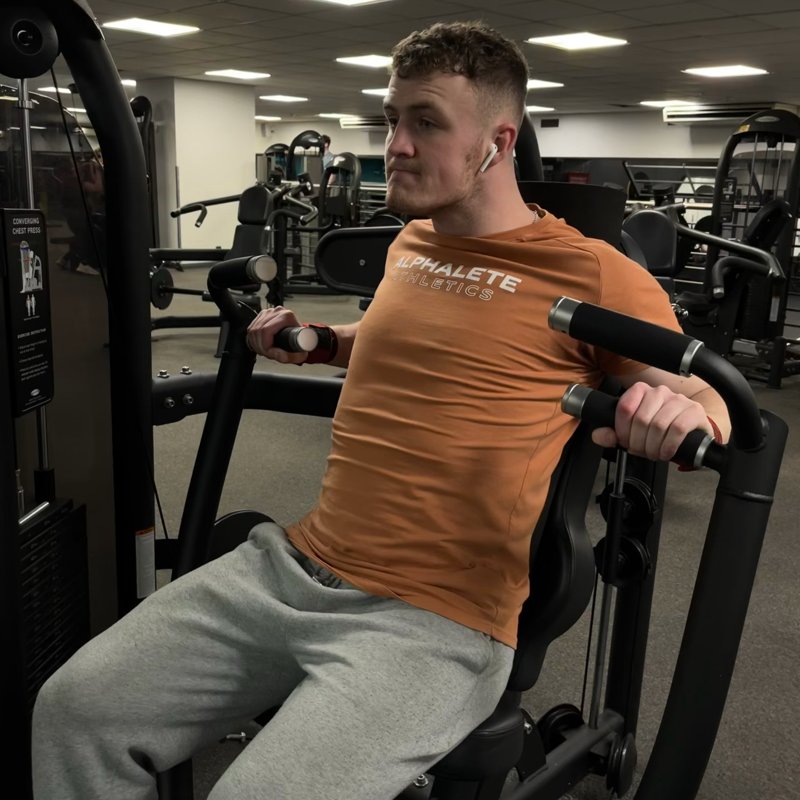
Log in to watch video demonstrations
Login to Watch2 video demonstrations available
Tips from the Community
Track your progress with Gravitus
Download Gravitus to log your workouts, track your progress, and join a community of fitness enthusiasts.

Helpful Resources
One Rep Max Calculator
Find your one rep max for any exercise without maximal testing. Essential for developing effective strength training programs.
Calculate 1RMWorkout Programs
Follow structured workout programs created by fitness professionals to maximize your strength and muscle gains.
View Programs